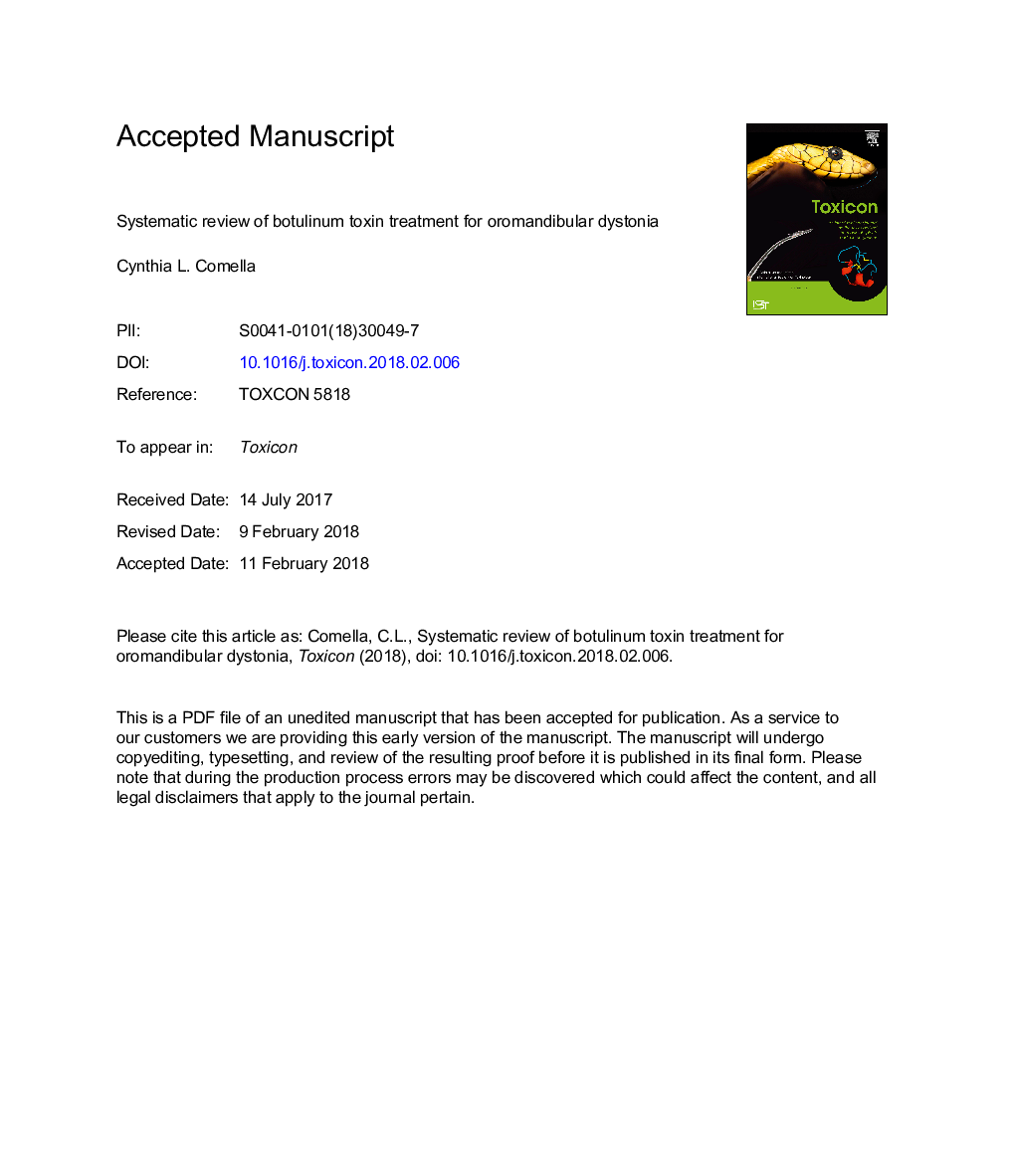| Article ID | Journal | Published Year | Pages | File Type |
|---|---|---|---|---|
| 8394393 | Toxicon | 2018 | 18 Pages |
Abstract
Oromandibular dystonia (OMD) is an isolated focal dystonia that affects the muscles of the jaw, lower face and tongue. It is a rare disorder but is associated with significant impairment in quality of life. Treatment with oral medications has not been successful. Surgical interventions, such as deep brain stimulation, may be of benefit but have not been adequately evaluated. Currently, botulinum toxin (BoNT) injections are regarded as the treatment of choice for OMD. However, the evidence supporting this is not available. Most studies are open label, observational studies, longitudinal clinical experience, case reports or retrospective analysis. From the available studies, OMD is responsive to appropriately targeted BoNT injections. Jaw closing dystonia responds the most robustly. Jaw opening dystonia is more complex to inject, but clinical experience is consistent with benefit. Lingual dystonia is the most difficult because injections into tongue muscles frequently give rise to dysphagia. More controlled studies are required to establish BoNT as an effective treatment for OMD.
Related Topics
Life Sciences
Biochemistry, Genetics and Molecular Biology
Biochemistry, Genetics and Molecular Biology (General)
Authors
Cynthia L. Comella,
